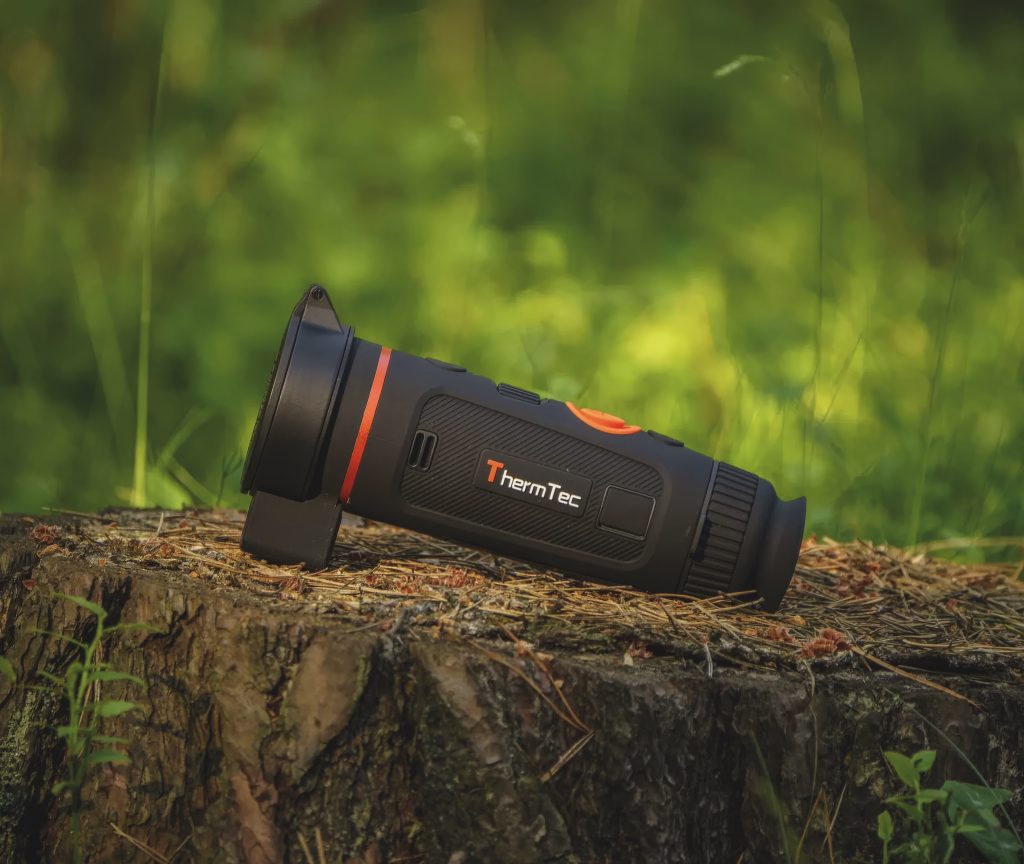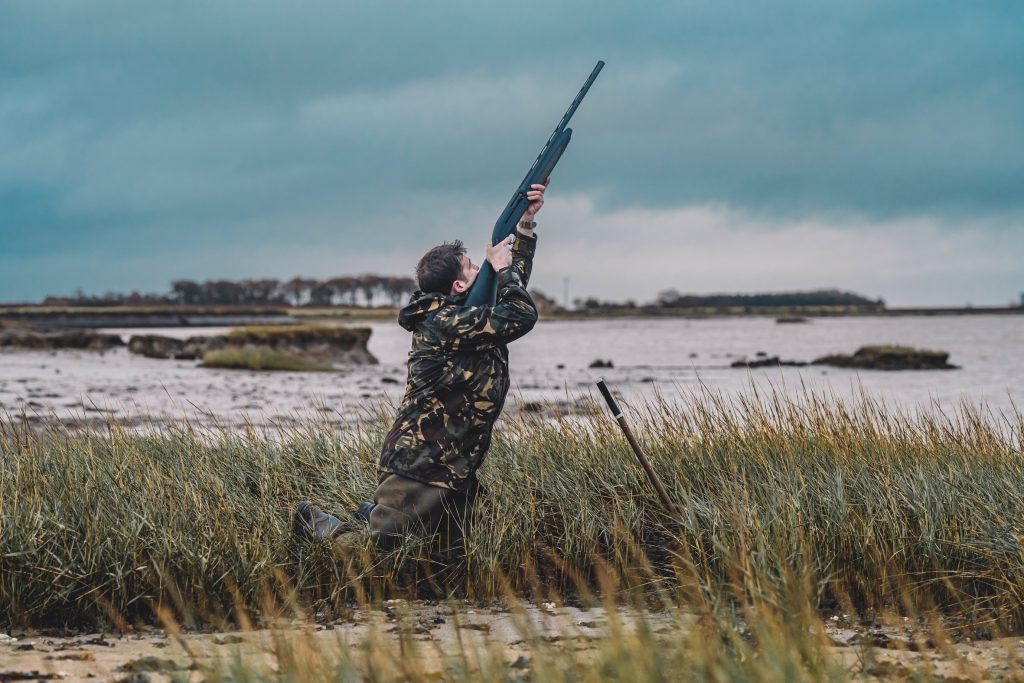Win CENS ProFlex DX5 earplugs worth £1,149 – enter here
Springer vs PCP – which is better to start out with?
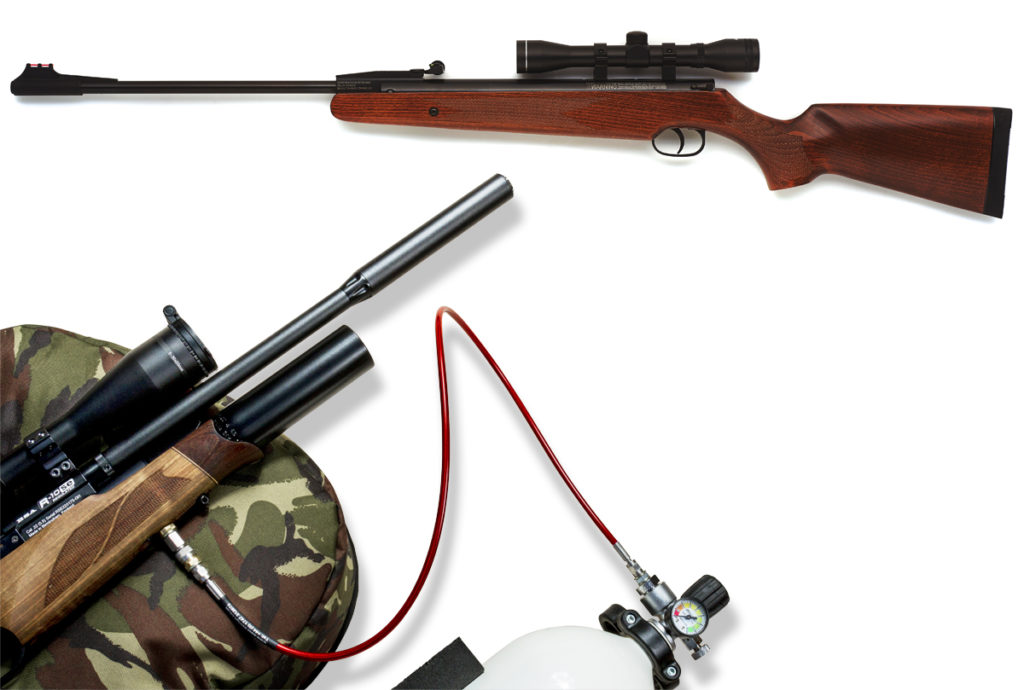
When it comes to the great springer vs PCP question, I’ve never actually seen anyone come to blows over it, but I’ve certainly witnessed some very heated debates about which type of air rifle is best to shoot – one powered by a mainspring, or one with an onboard reservoir of compressed air.
People’s preferences and opinions are, of course, forged by many different factors, such as what type of rifle they were brought up with, what type of rifle they currently own and how well they can shoot it. But what about the newcomer to the sport?
Take the case of someone who’s never shot an airgun before, but is excited to set off down a path that could lead to a lifetime of enjoyment. Provided, that is, that they start enjoying themselves at the outset and keep coming back for more.
So should someone like this start off with a springer or a PCP? The springer vs PCP question is one that should ideally be answered by the new shooter themself, but because they don’t yet have the experience it’s often left for others to answer on their behalf.
I recently asked the springer vs PCP question of five coaches and five experienced shooters, and was very interested to find their replies did not tally in the slightest. I’ll let you know what they said after running through a few points, some obvious and others perhaps less so.
Springer vs PCP – what’s the difference?
By far the biggest distinguishing feature of the two types of powerplant is recoil. During the firing cycle of a spring-powered rifle, the rifle will exhibit both backwards and forwards movement in the shoulder as the mainspring and piston move back and forth inside the cylinder.
This phenomenon isn’t restricted just to one kick backwards and then one forwards, but can go on for several cycles before the moving parts come to a complete stop. Depending on the particular rifle and whether or not it’s been tuned, recoil may be fairly spirited.
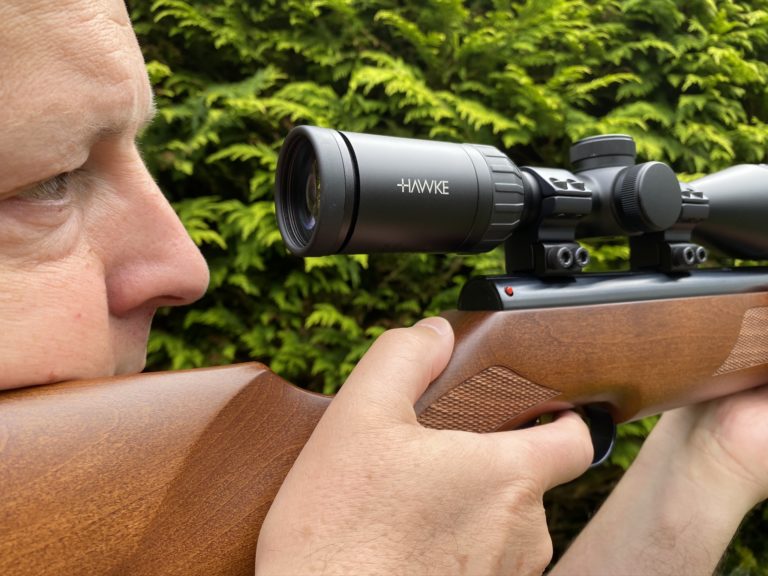
A well-mounted scope is vital for both types of rifle, but the springer shooter risks personal injury if it’s too far back – this one is just right for Mike
It’s a common misconception that PCPs, at least those of the sub-12 foot pound variety, do not exhibit any recoil. Recoil in a PCP is present, it’s just that most shooters don’t notice it. If you take a slow motion video of a fellow shooter releasing a shot from a PCP, you’ll see there’s definitely some movement there, just not very much.
But the difference in the amount of recoil generated by a springer compared with a PCP is huge. So huge, in fact, that it greatly affects the way the rifle must be shot. When a spring-powered rifle is fired, it must be allowed to complete the recoil phase and come to rest in exactly the same way for each and every shot.
A spring-powered rifle will only ever be truly accurate if it is shot consistently. If it’s gripped too hard then the gun will not be able to recoil in the same manner from one shot to the next, which means the pellet’s point of impact will not be consistent either. For this reason, a spring-powered rifle must be held gently, and it must be held this way for every shot that’s taken.
A PCP, on the other hand, is far more forgiving. Recoil is minimal, so the shooter can adopt a series of different holds without affecting where the pellet will land, provided their head and eye position behind the sight remain consistent.
Lock time
It may seem instantaneous to the shooter, but there’s a delay between the time the trigger blade is pulled, slipping the sear, and the time the pellet actually leaves the barrel. This is known as lock time.
If the rifle is moved during this period, which is measured in tiny fractions of a second, the barrel may launch the pellet in a direction not intended by the shooter.
Springers have a longer lock time than PCPs, and therefore need to be held steadily on aim until the pellet has reached its target. This is known as follow-through. Someone shooting a PCP must use follow-through as well, but it’s even more important for the springer shooter where the lock time is longer.
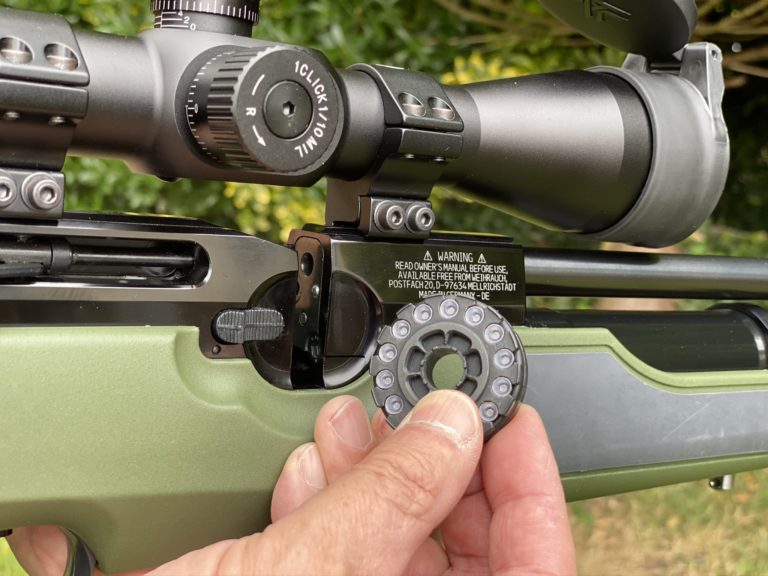
With some exceptions, springers are single-shot only, while the majority of non-target-specific PCPs come with a multi-shot magazine
Eye relief
For any type of rifle to shoot to its optimum capability, the scope, if one is being used, must be mounted properly for the individual shooter. One piece of well-meaning advice that’s sometimes offered to newcomers is to mount the scope as far back as possible as this can minimise parallax error.
Apart from this probably not being the optimum placement for the scope, the springer shooter is now at risk of receiving a bruised or even cut eyebrow if they get hit in the face by the ocular bell as the rifle kicks back under recoil.
Ironically, receiving a (hopefully) minor injury like this can be turned into a positive as it teaches the new springer shooter the value of correct scope placement while very clearly illustrating recoil.
The PCP shooter, conversely, is at no risk of this happening, and some PCP-only scopes are actually designed to come into contact with the shooter’s face.
Flinching
Anyone who has been the unlucky recipient of a bash to the face from their scope under recoil will become wary of it happening again – even if the scope has now been repositioned correctly – and may flinch prior to releasing the trigger sear.
Becoming tense, and in some cases closing the shooting eye as a reflex action, is not conducive to taking an accurate shot. It’s a bad habit that’s easy to adopt, but hard to get out of.
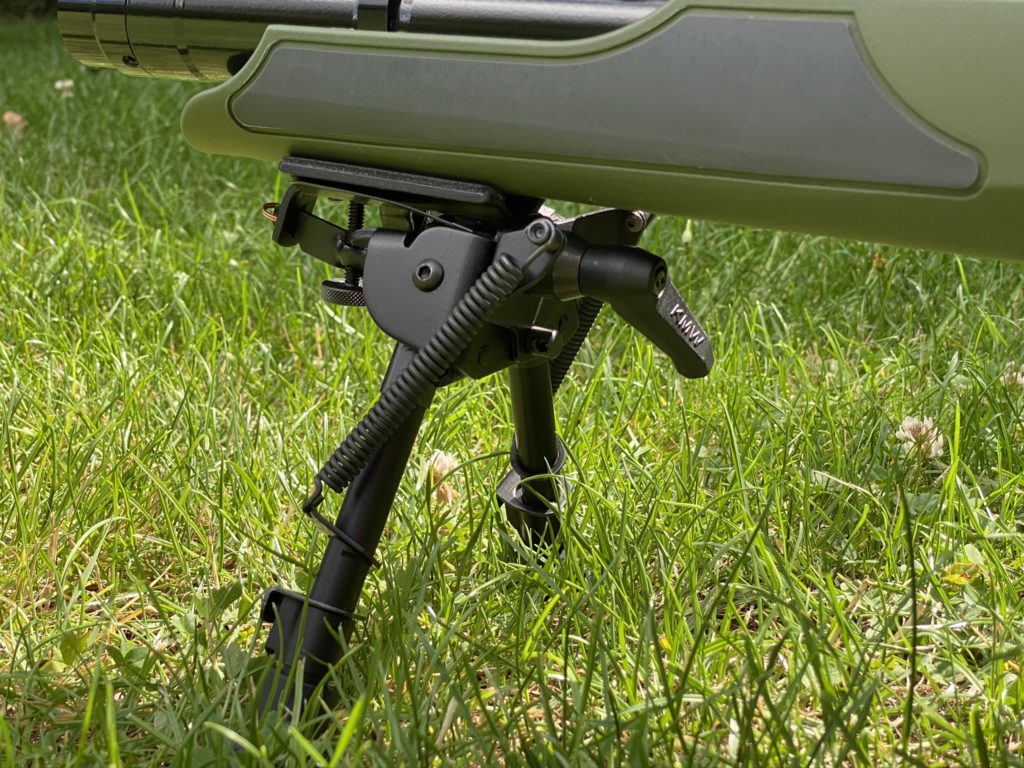
A bipod offers a super-stable support for a PCP, but is generally unsuitable for a springer as it makes the way the gun recoils inconsistent
Accuracy
One misconception concerns the perceived accuracy of a springer compared with a PCP, the consensus being that the PCP is going to be the more accurate of the two.
In fact, springers are just as accurate as PCPs, and springers often have excellent shot-to-shot consistency, rivalling or sometimes even outperforming a PCP when muzzle velocity is tested by shooting several pellets over a chronograph.
So why do some people think PCPs are more accurate? Again it’s down to recoil, and the fact that springers are harder to shoot because of it. A novice shooting a PCP may even be able to shoot more accurately than an intermediate springer shooter, but it’s not the rifle itself that’s more accurate, just the way it’s being shot.
Springer vs PCP – difference in power
Under current UK firearms legislation, an air rifle which can be held without a Firearm Certificate (FAC) must not have a muzzle energy that is in excess of 12 foot pounds.
This is the amount of energy needed to move 1lb in weight some 12 feet, and is sufficient for all organised airgun target shooting and most hunting scenarios, although some short-range target disciplines restrict muzzle energy to six foot pounds.
Most new air rifles will be adjusted to deliver around 11 foot pounds of muzzle energy to keep them within the law and to provide a buffer should power start to creep up slightly as the rifle beds in. However, it is the shooter’s responsibility to ensure their rifle does not exceed the 12 foot pound limit.
Stability
Recoil also affects the way a springer can be supported while it’s being fired. Placing the forend of a springer in the yoke of a set of shooting sticks or resting it directly on a bench bag will usually upset the way the gun recoils, therefore upsetting shot placement.
To counter this, the forend can be gently rested in the palm of the leading hand, which in turn can be placed in the vee of the shooting sticks or on top of the bag.
This way, the springer is still being supported, but it can also recoil naturally and consistently. Some springers come supplied with bipods, but again this device will interfere with recoil and should generally be avoided.
A PCP, in contrast, can be placed in or on most types of support and the pellet’s flightpath will not be affected. A bipod can also be used for shooting prone, off the bonnet of a vehicle or off a bench where these shooting aids will assist accuracy, not prove a hindrance to it, provided the forend is stiff and the barrel is free-floating.
Springer vs PCP – what’s the cost?
The choice of air rifles on sale today is phenomenal, but for most people their budget is not, and cost can be a deciding factor. Spring-powered rifles tend to be cheaper than PCPs, but the gap is narrowing, and a high-end springer can cost more than a budget PCP.
That said, it’s still far cheaper to start out with a budget springer rather than a budget PCP, and some of the less expensive springers offer a degree of accuracy that belies their cost.
Cocking a springer
The physical effort that is needed to cock a PCP, whether it’s bolt-action, straight-pull or sidelever activated, is usually pretty negligible compared with a springer. But a spring-powered rifle, whether it’s a break-barrel or has an underlever or sidelever cocking mechanism, demands a blend of physical exertion and technique.
Some smaller or physically less capable shooters may find cocking a springer a bit of a chore, and there’s a danger factor too.
It’s essential to use the correct technique to ensure the cocking mechanism is under full control and the spring is not released prematurely, which could cause the barrel, lever or sliding compression tube to snap closed in a violent manner, posing the risk of physical injury as well as damaging the gun.
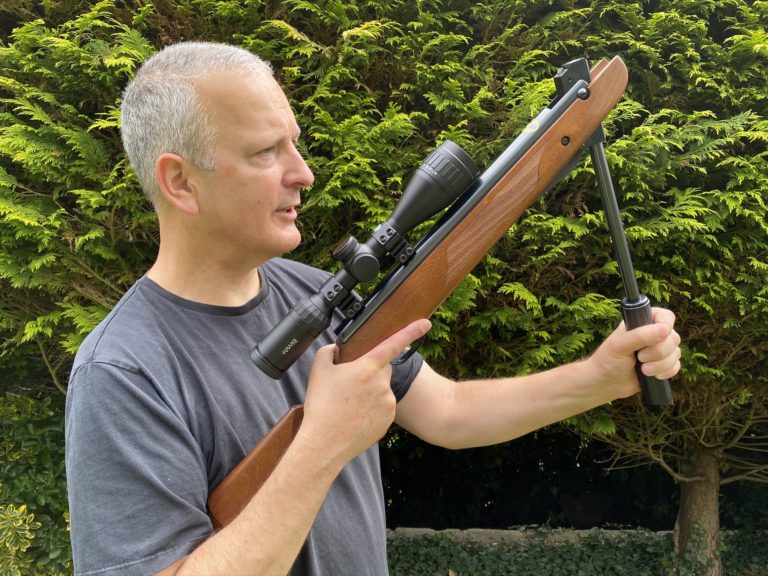
A spring-powered rifle must be carefully controlled during the cocking phase to avoid both personal injury and damage to the rifle
Charging a PCP
PCPs contain a readily available source of compressed air, but that has to come from somewhere, and that means either from a scuba tank-style charging cylinder or a bicycle-style stirrup pump, both of which will need an appropriate fill line and connectors.
That means more expense, and in the case of the pump, it also means a fair bit of physical effort will be required to operate it. A springer, meanwhile, doesn’t need any of this, and is always ready for action, unlike a PCP which will need to be topped up when the residual air pressure drops below a certain level.
Springer vs PCP – what did the coaches say?
The coaches that I spoke to came from either a gun club or scouting background, but were universal in what they had to say – all newcomers should be taught how to shoot with a springer.
Their argument was sound: springers are harder to shoot than a PCP because the shooter must be aware of the way they hold the gun when they release each shot.
And if someone can learn to shoot a springer, then they can learn to shoot any type of rifle. Furthermore, using a springer will ensure the new shooter does not adopt any bad habits, such as holding onto the grip or forend too tightly, or changing the type of hold they adopt, while these bad practices can be masked when shooting the more docile PCP.
What did the shooters say?
I spoke to a few shooters ranging in age from someone in their 20s to someone in their 60s. While they’d all started out using a springer, all of them said they would have preferred to have begun with a PCP.
Because PCPs are easier to shoot, they said a newcomer’s efforts would be rewarded more quickly, which would ensure they maintain their interest in shooting.
And once that person had mastered shooting a PCP and was excited about extending their airgun journey, they could then take on the additional challenge of shooting a springer.
Springer vs PCP – what do you say?
Some things in life are black and white, but the issue here is very much grey as there is no ‘right’ answer. If you’re a newcomer to the sport then hopefully you are aware of some of the issues and can now make a more considered choice when shooting your first air rifle or making your first purchase, be it PCP or springer.
Whether you become a master of the mainspring, or take charge of your pre-charged, I hope you take pleasure in your shooting and enjoy the sport for decades to come.
Related Articles
Get the latest news delivered direct to your door
Subscribe to Shooting Times & Country
Discover the ultimate companion for field sports enthusiasts with Shooting Times & Country Magazine, the UK’s leading weekly publication that has been at the forefront of shooting culture since 1882. Subscribers gain access to expert tips, comprehensive gear reviews, seasonal advice and a vibrant community of like-minded shooters.
Save on shop price when you subscribe with weekly issues featuring in-depth articles on gundog training, exclusive member offers and access to the digital back issue library. A Shooting Times & Country subscription is more than a magazine, don’t just read about the countryside; immerse yourself in its most authoritative and engaging publication.






